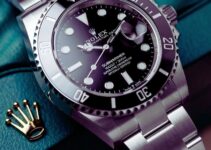Swot analysis of H&M. Hennes & Mauritz AB is a Swedish fast clothing fashion multinational retail company. Erling Persson was the founder of H&M, and he laid the foundation of the company on October 04, 1947. The headquarter of the company is in Stockholm, Sweden.
H&M is the world’s second-largest clothing fashion brand after Zara (Subsidiary of Inditex brand). According to an estimate, H&M is operating its business in 6 continents and over 74 countries across the globe.
H&M’s main products are;
- Apparel,
- Clothing,
- Home textile,
- Accessories,
- Sportswear,
- Footwear,
- Underwear,
- Cosmetics.
According to an estimate, the annual revenue of H&M in 2022 was 23.147 billion dollars, and it has decreased by 13.74%. Out of which, the net income of the fashion brand was 1.002 billion dollars, and it has increased by 1.93%.
However, some of the top competitors of H&M are;
Today, we’ll discuss the swot analysis of H&M. It’s going to focus on the internal and external factors impacting the world’s leading clothing fashion brand. For external factors, check out the pestle analysis of H&M. Here’s the swot analysis of H&M as follows;
Strengths of H&M
CSR (Corporate Social Responsible)
H&M is a socially responsible organization, and the company cares about the community in which it’s doing its business. For instance, the fashion brand shut down its retail stores during the protest in the USA. The company played an active role to help pandemic victims in Bangladesh.
Supply Chain System
H&M efficiently uses an advanced NextGen supply chain management system. The proficient supply chain management system makes the products available to the customers on time.
Online Store
H&M has an online store, and the brand has pages on various social media platforms and which increases the conversion rate. However, the e-commerce store helped the clothing fashion brand minimize the losses during the pandemic crisis. The lockdown and shutdown ruined many businesses.
Brand Value
According to the ranking of Interbrand in 2020, H&M is the 37th world’s most valuable brand with a brand worth 14008 million dollars. The company’s growth has decreased by -14% during the pandemic years. Nevertheless, the brand is still following the customer-focused marketing approach.
Diverse Product Portfolio
H&M has a diversified product portfolio, and the company offers various ranges of products and services to customers. They vary from candle holders, apparel, pots, cosmetics, and blankets to boiled eggs. However, the company also offers ARKET, H&M Home, and Cheap Monday to attract the attention of customers.
Economical Prices
H&M provides quality products at an economical price range. The fashion brand knows the fact that price matters to a majority of customers. However, the company exploits the cost-effective approach during the production process. It helps the company to offer a cheaper price to the customers.
Global Brand
H&M is a global multinational brand. The fashion brand has approximately more than 5076 stores in 74 countries worldwide. The company has employed roundabout over 126,376 employees to manage various operations across the globe in countries like Australia, Canada, the USA, the UK, Asia, China, Africa, etc. The global brand presence helps the company decrease the risks.
Effective Marketing Strategy
H&M follows the fast fashion marketing strategy of adopting the latest fashion trends of various designers and fashion brands. This strategy helps the company to amplify the turnover rate. However, it requires the company to quickly deliver the product from the production facility to the retail store.
Weaknesses of H&M
Ethical Issues
Many fashion critics claim that the company follows the trends and copy ideas of other designers and companies. Then H&M introduces those products under its brand logo without giving any credit to the original creators. However, they also question the poor working conditions of its manufacturing units in third-world countries.
Lake of Original Trends
H&M usually follows the successful fashion trends set by other famous designers and retailers. Sometimes those trends have become obsolete for many customers. That’s why a company’s trends don’t inspire others.
Controversial Ad
H&M hired a black child as a model in the promotion of hoodie advertisements in 2018. Its title was “coolest monkey in the jungle,” and it offended a lot of customers. In fact, many called it racist and they went on boycotting the company’s products.
Relying on Outsourcing
According to an estimate, H&M has approximately more than 900 production units and suppliers in Europe and Asian countries. They provide the company the option of cheap labor and increase its profitability. But it makes the company completely dependent on third-party suppliers and manufacturers.
Opportunities available to H&M
Acquisition & Merger
H&M should consider acquiring local distributors, suppliers, and businesses in different countries. They would help the fashion brand to approach the customers better. However, the company should also enter into the relevant second-hand clothing market and acquire any such firm, it has growth potential.
Developing Markets
Since H&M offer products at an economical price range, the Asian and African market would be great place for the company. The economic conditions are getting better and the middle class is growing.
E-commerce
If we compare the H&M online retail store with the e-commerce platform of Amazon, Zara, and Gucci, then the fashion brand is far behind them. The company should invest more resources on the online platform, online shopping is the growing future of today and tomorrow.
Expanding Product Portfolio
H&M should further diversify its product portfolio and expand it into sportswear items. The bottom line product diversification and expansion would open the door to a lot of new opportunities.
Threats H&M has to face
Increasing Cost
Factors like labor costs and costly raw materials have increased the overall production cost of the final product. The company can’t increase the retail price at a certain limit because of price competition. The increasing cost has decreased the company’s total revenue.
Counterfeit
Counterfeit and fake products are very common in the fashion industry. Any new retailer copies the design of famous designers and prints their logo on the finished good. The fake logo would deceive many ordinary customers, and they’re willing to pay premium prices. When they don’t get the required quality, they blame the original company.
Competition
The clothing fast fashion industry has become very competitive in recent years. Zara, Gucci, Boohoo, Gap, and Macy’s are some of the main competitive brands. H&M is competing with them on various levels like price, quality, marketing, promotion, and design.
Economic Recession
The pandemic has caused a global economic crisis that created an environment of uncertainty and an increasing unemployment rate. They see ordinary and normal clothing as a necessity, but fashion products fall under the category of luxury. The demand for luxury products has declined resultantly.
Conclusion: H&M Swot Analysis Example Company
After a careful study of the swot analysis of H&M, we’ve concluded that H&M is indeed the world’s leading fast-fashion clothing brand. Economic crisis, increasing costs, and counterfeiting are some of the main challenges. H&M should address these issues while paying heed on the internal strengths weaknesses; external opportunities threats of fast-fashion swot analysis example company.

Ahsan Ali Shaw is an accomplished Business Writer, Analyst, and Public Speaker. Other than that, he’s a fun loving person.


